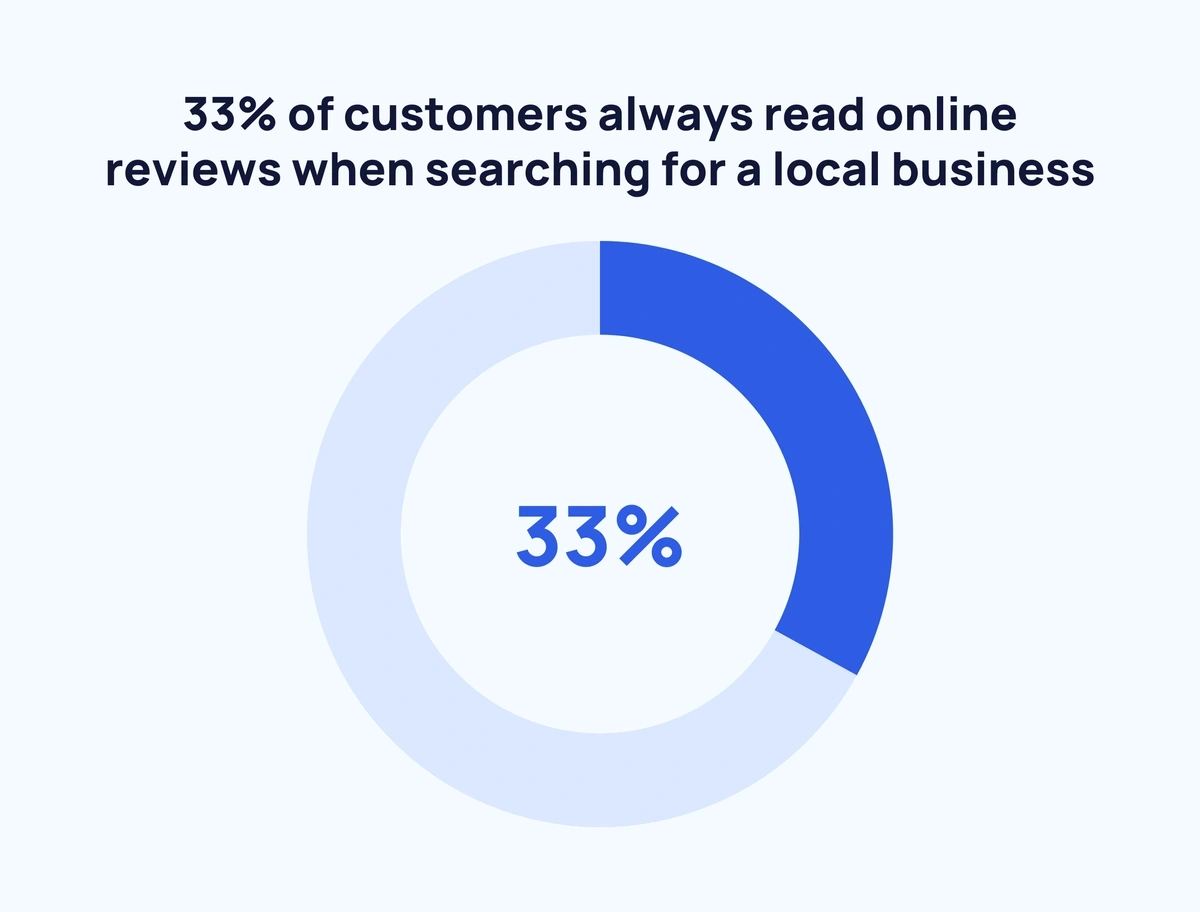
50+ Social Proof Statistics & Trends (2024)
Online reviews, testimonials, user-generated content, and influencer endorsements are all important forms of social proof. And they’re incredibly influential in informing purchase decisions and building brand loyalty.
That’s because recommendations bring something to the table that traditional advertising doesn’t: authenticity.
To illuminate the power of social proof, here is a list of up-to-date statistics and trends.
Top Social Proof Statistics
There’s a lot of ground to cover in this area. To get started, here are some more notable numbers around social proof:
- The average online shopper expects to see at least 112 reviews for a given product.
- 92% of consumers feel hesitant to buy when there are no customer reviews available.
- 88% of Gen Zs and Millennials use social media to research products they’re interested in buying.
- 87% of consumers would not consider a business if it had less than a 3-star average rating.
- 79% of consumers have watched a video testimonial to learn more about a brand or product.
- 75% of marketers believe that user-generated content makes their marketing more engaging.
Social Proof: Online Reviews and Testimonials
With most of the world’s businesses having an online presence, online user reviews are a form of social proof in action. There are actually two sides to social proof in online reviews. Aggregate review scores — or star ratings — inform shoppers about the quality of a product or service. But the number of reviews a product has can be equally important.
On average, online shoppers expect to see at least 112 reviews for any given product (Salsify)
The more reviews a product has, the more likely shoppers are to consider buying. According to research by Salsify, the number of reviews shoppers expect depends on age—the younger the shopper, the more reviews they expect.
Buyers aged 18-24 expect to see 203 product reviews, while 55 to 64-year-olds only need to see 38 reviews.
66% of consumers say positive user reviews are most important when making purchase decisions (Retail TouchPoints)
User reviews are the tipping point between buying from a brand and searching elsewhere. New research by Cone found that 4 out of 5 consumers have actually reversed a purchase decision after reading negative reviews.
45% of consumers say they’re more likely to shop with a business that responds to negative reviews (ReviewTrackers)
Bad reviews don’t always scare customers away — as long as businesses respond to them. 53% of consumers expect businesses to respond to negative reviews within a week. Of consumers who have left negative reviews, 63% said at least one company never responded.
Around 9 in 10 consumers feel hesitant to buy when there are no customer reviews available (TINT)
When social proof is absent, potential customers have a hard time taking action. 35% of consumers say they’re less likely to buy when there are no customer reviews available.
An additional 32% say they’ll spend more time researching a product or service if they can’t find any reviews. 23% say they’ll have difficulty making a buying decision. And 2% say they flat out won’t buy the product or service.
80% of consumers say they’ve been prompted to leave a review by a business at least once in the past 12 months (BrightLocal)
Businesses understand the power of social proof and the boost positive reviews can have on sales. That’s why many businesses reach out for customer feedback. How effective is reaching out? Of the 80% of consumers who have been prompted to leave a review:
- 24% never leave a review.
- 33% leave a review less than half the time.
- 28% leave a review more than half the time.
- 15% always leave a review.
One-third of customers always read online reviews when searching for a local business (BrightLocal)
Online reviews are influential when browsing for local businesses. 98% of users say they at least occasionally read online reviews when looking up local businesses.
Where do these users turn to find local reviews?
- 87% search Google for online reviews.
- 48% use Yelp.
- 46% use Facebook.
- 29% Use Tripadvisor.
Those four review sites also account for 88% of all online reviews.
87% of consumers would not consider a business if it had less than a 3-star average rating (BrightLocal)
Only 6% of consumers say star ratings don’t affect their choice in business. The other 94% have varying minimums they’d like to see before considering a purchase. 38% of shoppers won’t do business with a brand unless they have a 4-star rating. 21% need to see at least a 3.5 rating, and 12% are happy to settle for 3 stars.
Online reviews affect more than just online sales (BazaarVoice)
Social proof in the form of online reviews can help strengthen a brand in multiple ways. In a brand survey, BazaarVoice discovered that 52% of businesses and brands found online reviews helped increase brand loyalty. To top it off, 53% said an increase in online reviews helped boost in-store sales, and 63% said reviews helped improve SEO.
Users have written 167.5 million reviews on Trustpilot since 2007 (Trustpilot)
Trustpilot is a giant in the online review space, pulling in $131.4 million in revenue in 2021.
That same year, users submitted 46.7 million reviews and viewed over 508 million business profiles.
71% of US consumers agree that positive Trustpilot scores make them more likely to shop from a brand.
Testimonials can increase conversions by 34% (VWO)
VWO, a A/B split-testing firm, worked with UK-based WikiJobs to see how effective testimonials would be on their sales page. By simply adding three short, text-only testimonials, WikiJobs saw their conversion rates jump 34%.
79% of consumers have watched a video testimonial to learn more about a brand or product (Wyzowl)
In a survey of 238 consumers, 77% of respondents said video testimonials helped convince them to purchase a product or service. According to the people surveyed, here’s why video testimonials are so effective:
- They help visualize how products or services work (47%).
- They feature an actual person (42%).
- They show viewers how a product can impact their lives (39%).
- They’re more authentic than brand-written marketing (37%).
Social Proof: Influencer Marketing
With the average person spending over two hours on social media per day, brands reach out to influencers on TikTok, Instagram, and Twitter to endorse their products.
As social proof, influencer marketing helps brands build loyalty and engagement and gives shoppers a more authentic look at new products.
Influencer marketing is reached an estimated market size of $21.1 billion in 2023 (Influencer Marketing Hub)
When Influencer Marketing Hub first started tracking the industry in 2016, they estimated it was worth $1.6 billion. Less than 10 years later, that number has increased over 1,318%.
72% of Gen Zs and Millennials follow at least some influencers (Morning Consult)
Brands have succeeded in using influencer marketing to capture the attention of younger generations. Even 58% of older Millennials — those between 32 and 38 years old — follow at least some influencers on social media platforms.
88% of Gen Zs and Millennials value authenticity when following influencers (Morning Consult)
Morning Consult asked 2,000 13 to 38-year-olds which traits are most important when following influencers on social media. The top trait was authenticity, with 88% of respondents saying it was either very important or somewhat important. Large influencer followings were the least important trait — only 29% of respondents place importance on the number of followers.
Around 9 in 10 Gen Zs and Millennials use social media to research products they’re interested in buying (Morning Consult)
Social media and influencers are integral parts of the shopping experience for younger generations. 50% of shoppers 38 or younger say social media is where they most often learn about new products. 18% learn the most from influencers’ and 12% from family and friends’ social media posts.
82% of marketers believe that influencer marketing attracts the highest-quality customers (Influencer Marketing Hub)
Most marketers agree that influencer marketing leads to more success than other kinds of marketing. But with many influencer marketing campaigns designed to boost brand awareness rather than drive sales, how do marketers measure success?
49.6% of marketers use views, reach, and impressions as their primary benchmark. Engagement (25.5%) and conversions or sales (24.9%) are less commonly used.
60% of marketers use third-party platforms to assist in their influencer marketing campaigns (Influencer Marketing Hub)
Finding and engaging with influencers can be a job in itself, so many marketers turn to third-party tools. Popular influencer marketing tools like Upfluence and Influencer’s Hub allow marketers to filter influencers by industry and reach.
Searches for Upfluence on Google.
Shoppers believe influencers are most effective at promoting beauty and personal care products (YouGov)
Influencers are a trusted source of social proof, but trust levels vary across product categories. 53% of consumers feel influencers are effective at promoting beauty and wellness products, the most of any product category. Consumers also place more trust in influencers promoting clothing and accessories (45%) and food products (25%).
Nano-influencers have the highest engagement rates (HypeAuditor)
Mega influencers and celebrities might have the highest reach on social media platforms, but nano-influencers have a leg up in engagement. Nano-influencers, or influencers with 1,000-5,000 followers, have a 5% average engagement rate — more than triple that of influencers with 1 million or more followers.
User-Generated Content
As a form of social proof, user-generated content can do some heavy lifting that online reviews and testimonials can’t. User-generated photos and videos give users a sneak peek at what their lives would be like if they had a product or service.
Shoppers are 2.4 times more likely to say user-generated content is more authentic than branded content (Nosto)
When users create content about a particular product or brand, they create instant social proof. In fact, 79% of consumers view user-generated content as having the highest impact on purchase decisions — more than professional brand images and celebrity or influencer content.
Interest in user-generated content has taken off in recent years.
56% of consumers say the top content they’d like to see from brands are user-generated photos and videos (Nosto)
Customers love creating and sharing content about brands, especially if they provide memorable experiences. One example is travel destinations. 89% of consumers say they would create and share content about travel destinations after a positive experience. They’re also happy to create content about their favorite restaurants (85%), beauty products (65%), and cars (62%).
3 in 4 marketers believe user-generated content makes marketing more engaging (TINT)
User-generated content also humanizes marketing, according to 45% of marketers. By infusing marketing efforts with an authentic, human element, user-generated content can increase engagement by an average of 28%.
Wrap Up
Social proof has been around long before online reviews and social media existed. But today, its impact on business has never been greater. People increasingly trust authentic product experiences over traditional advertising—a trend that’s not likely to go away.
Without social proof across multiple channels, today’s brands can struggle to build a following and generate sales. New brands can tap into social proof by working with influencers, reaching out to customers for reviews, and showcasing user-generated content.
Want to keep learning? Read about another side of social proof in referral marketing.
Stop Guessing, Start Growing 🚀
Use real-time topic data to create content that resonates and brings results.
Exploding Topics is owned by Semrush. Our mission is to provide accurate data and expert insights on emerging trends. Unless otherwise noted, this page’s content was written by either an employee or a paid contractor of Semrush Inc.
Share
Newsletter Signup
By clicking “Subscribe” you agree to Semrush Privacy Policy and consent to Semrush using your contact data for newsletter purposes
Written By


Josh is the Co-Founder and CTO of Exploding Topics. Josh has led Exploding Topics product development from the first line of co... Read more








